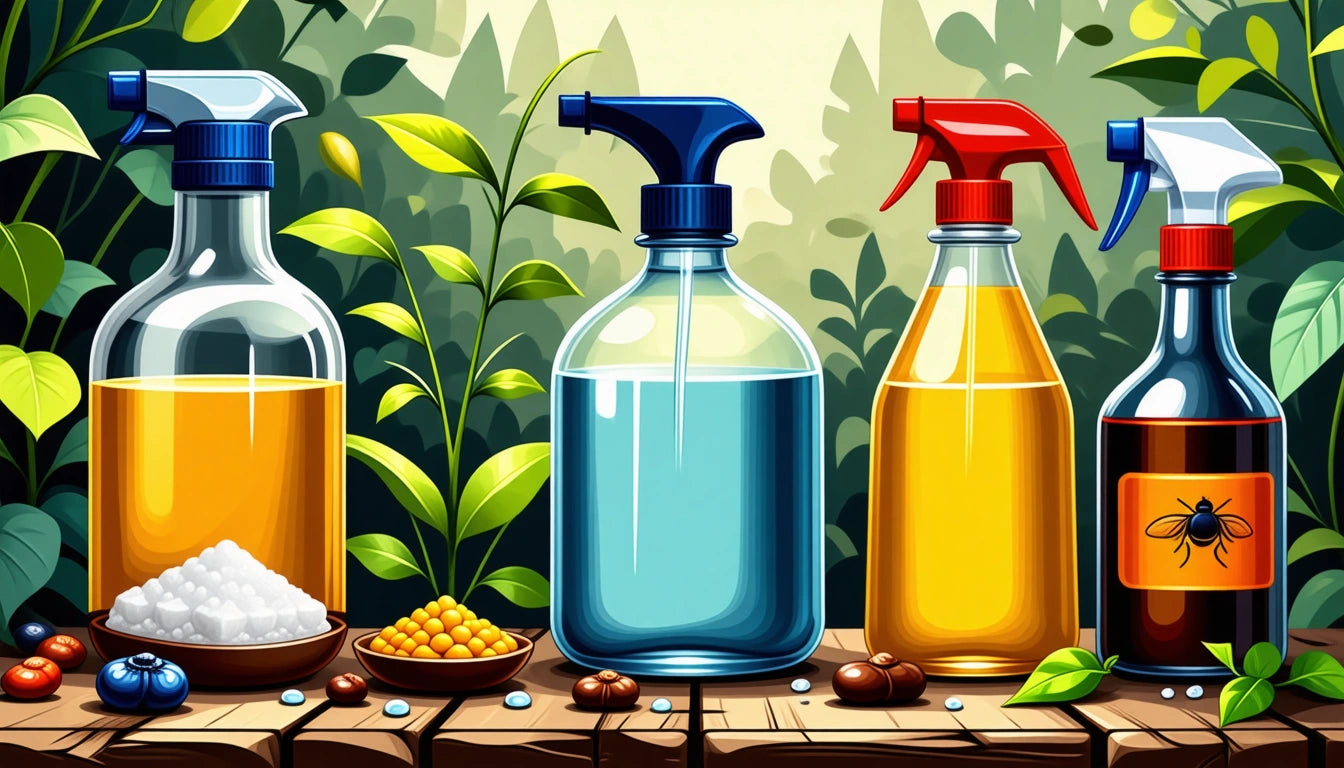- Understanding Insecticidal Soap: How It Works
- DIY Insecticidal Soap Recipes: Simple and Effective Formulas
- Application Methods: Getting the Most from Your Insecticidal Soap
- Soap Packaging Ideas: Storing Your Homemade Solution
- Common Mistakes When Using Insecticidal Soap
- Best Practices and Future Use of Insecticidal Soaps
Creative Packaging and DIY Guide: Making and Using Insecticidal Soap
Insecticidal soap offers an eco-friendly alternative to harsh chemical pesticides for managing garden pests. This natural solution works effectively against soft-bodied insects while remaining gentle on beneficial garden creatures and the environment. Creating your own insecticidal soap at home is straightforward, cost-effective, and allows you to control exactly what goes into your pest management routine.
Understanding Insecticidal Soap: How It Works
Before diving into recipes and applications, it's important to understand how insecticidal soap functions. Unlike systemic pesticides that poison insects, insecticidal soap works through physical means.
The Science Behind Insecticidal Soap
Insecticidal soap targets soft-bodied insects through direct contact. The fatty acids in the soap dissolve the protective waxy coating on insect bodies, causing them to dehydrate and die. This mechanism explains how insecticidal soap works without harming plants or creating toxic residue.
The best insecticidal soap formulations use potassium salts of fatty acids, which are particularly effective against:
- Aphids
- Mealybugs
- Spider mites
- Whiteflies
- Thrips
These pests commonly affect both outdoor gardens and indoor plants, making insecticidal soap a versatile solution for various growing environments.
DIY Insecticidal Soap Recipes: Simple and Effective Formulas
Learning how to make insecticidal soap at home requires just a few basic ingredients and proper measurements to ensure effectiveness without damaging plants.
Basic Insecticidal Soap Recipe
The simplest formula requires:
- 1 tablespoon mild liquid soap (pure castile soap preferred)
- 1 quart water
- Optional: 1 teaspoon neem oil for enhanced efficacy
When considering how to make insect soap, it's crucial to use pure soap without additives, degreasers, or detergents that could harm plants. Pure castile soap provides the necessary fatty acids without harmful chemicals.
Enhanced Formula with Essential Oils
For stronger protection, you can add:
- 1 tablespoon mild liquid soap
- 1 quart water
- 5-10 drops of essential oils (peppermint, rosemary, or thyme)
- 1 teaspoon of vegetable oil to help the solution stick to plants
This enhanced version works particularly well for persistent pest problems. Similar to how we carefully formulate cannabis-infused products, precision in measurements ensures effectiveness without plant damage.
Application Methods: Getting the Most from Your Insecticidal Soap
Proper application is crucial for insecticidal soap to work effectively. Unlike systemic pesticides, insecticidal soap must make direct contact with pests.
Spray Application Techniques
For optimal results:
- Apply during early morning or evening to prevent rapid evaporation
- Ensure complete coverage of affected areas, especially leaf undersides
- Spray directly on visible pests for immediate effect
- Reapply every 5-7 days until pest issues resolve
When considering how to make soap insecticide work effectively, remember that thorough coverage is essential. The solution must contact the insect bodies directly to disrupt their protective coating.
Soap Packaging Ideas: Storing Your Homemade Solution
Proper storage extends the shelf life and maintains the effectiveness of your homemade insecticidal soap. When exploring soap packaging ideas, consider both functionality and convenience.
Effective Storage Solutions
For best results:
- Use amber or opaque spray bottles to protect from light degradation
- Label clearly with contents and date of preparation
- Consider child-resistant caps for your storage containers if you have children or pets around
- Store in cool, dry locations away from direct sunlight
Similar to how we approach packaging for bath bombs, protecting your insecticidal soap from environmental factors preserves its potency. Quality containers with proper sealing capabilities prevent contamination and evaporation.
Common Mistakes When Using Insecticidal Soap
Even when you know how to make an insecticidal soap correctly, application errors can reduce effectiveness or damage plants.
Avoiding Common Pitfalls
Watch out for these mistakes:
- Using dish detergents with degreasers or additives
- Applying during hot, sunny conditions causing leaf burn
- Spraying beneficial insects like bees and ladybugs
- Over-application leading to plant stress
- Using on sensitive plants like sweet peas, thin-leaved plants, or certain ornamentals
If you're wondering, "how do I make insecticidal soap that's safe for all my plants?" always test on a small leaf area first and wait 24 hours to check for adverse reactions before full application.
Best Practices and Future Use of Insecticidal Soaps
As gardening continues to trend toward organic and sustainable methods, insecticidal soaps remain a valuable tool in integrated pest management strategies.
The best insecticidal soap practices include:
- Rotating with other natural pest control methods to prevent resistance
- Using preventatively on pest-prone plants during vulnerable growth stages
- Incorporating into broader garden health strategies including proper watering and plant spacing
- Documenting results to refine your formula for specific pest challenges
Much like the process of making cannabis concentrates requires attention to detail, successful pest management with insecticidal soap depends on careful observation and consistent application.
By creating your own insecticidal soap with proper packaging and application techniques, you're not only saving money but also contributing to more sustainable gardening practices that protect beneficial insects and the broader ecosystem.











Leave a comment
All comments are moderated before being published.
This site is protected by hCaptcha and the hCaptcha Privacy Policy and Terms of Service apply.